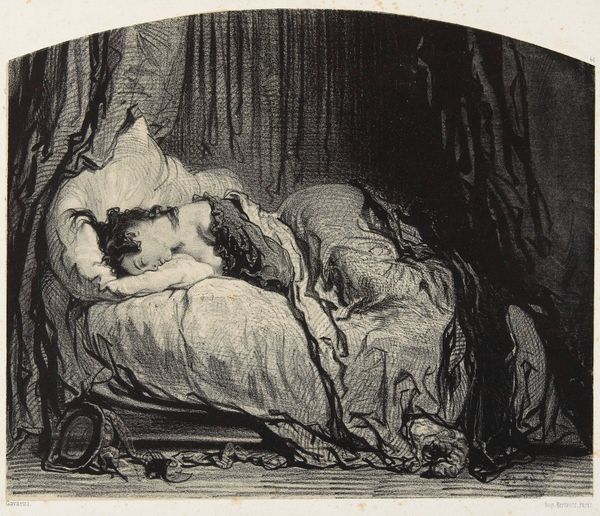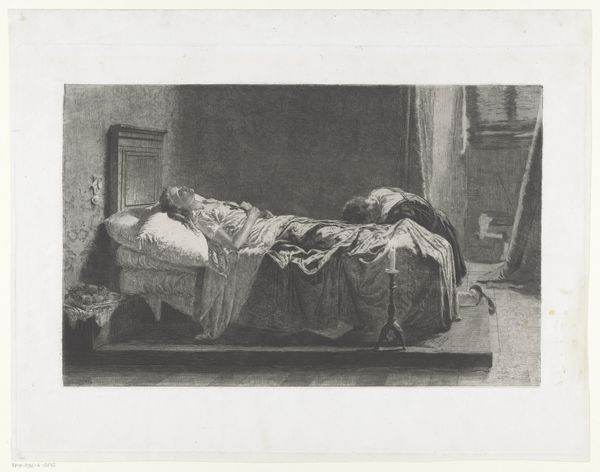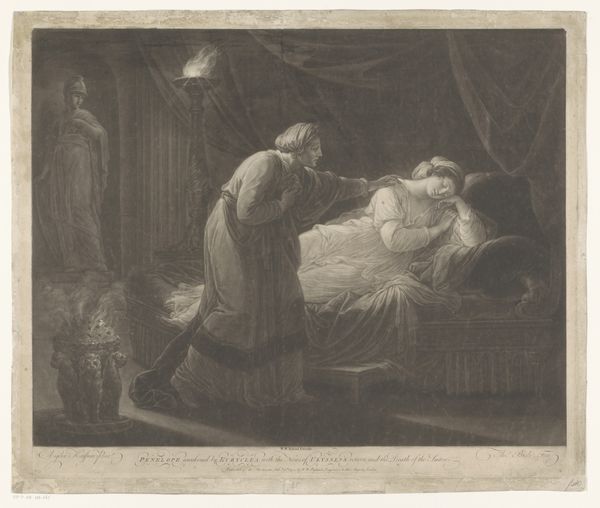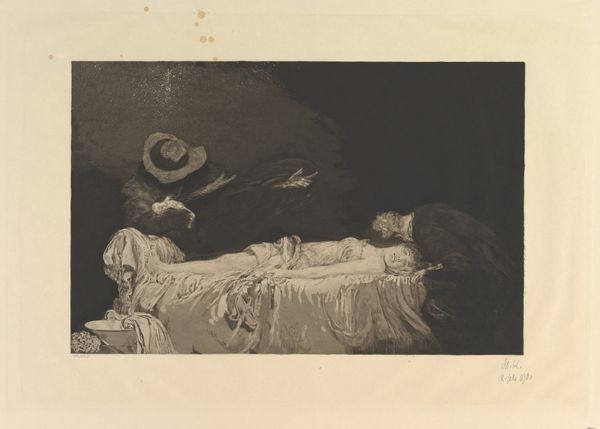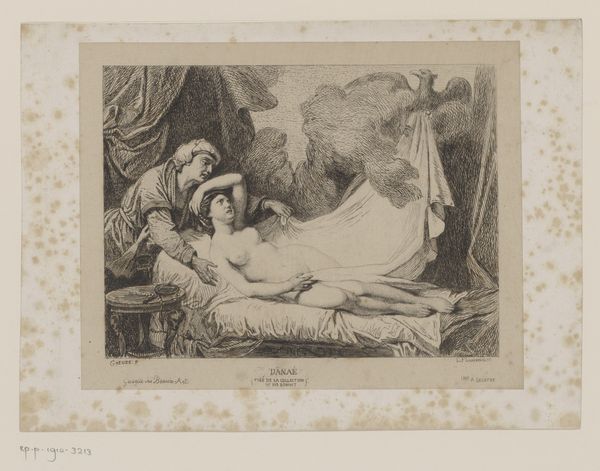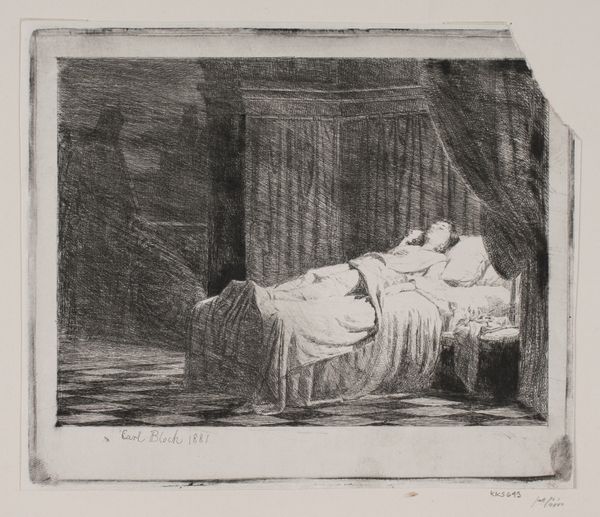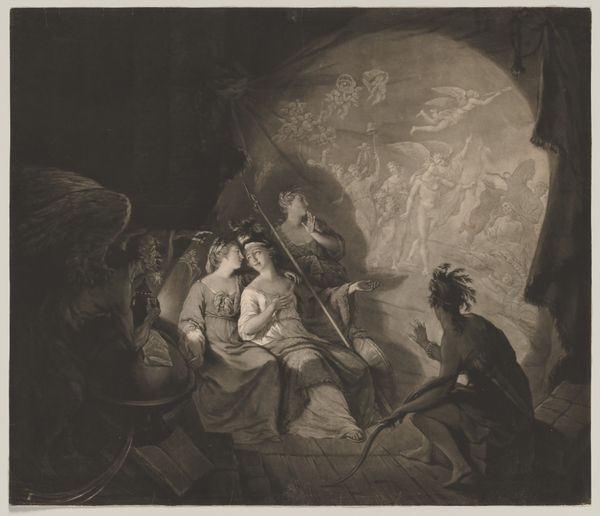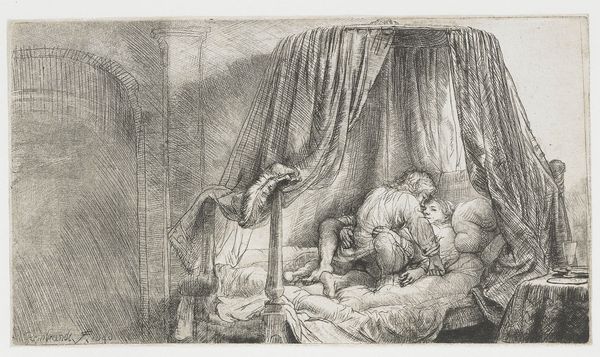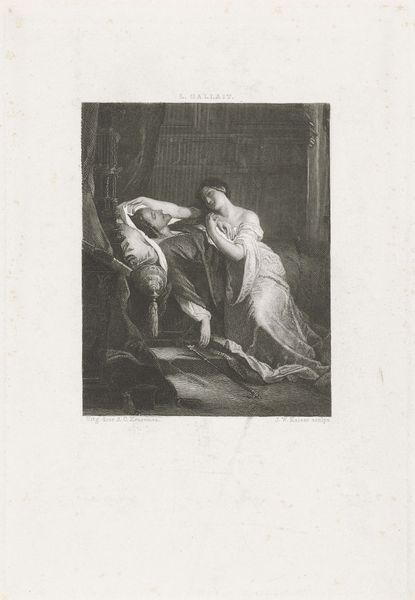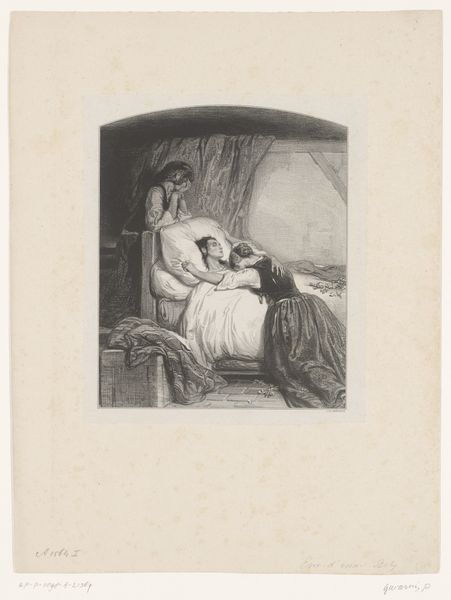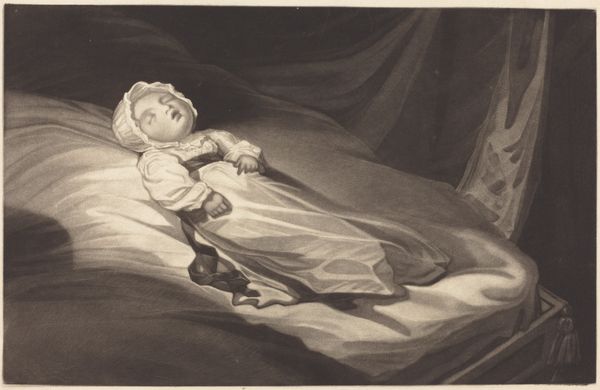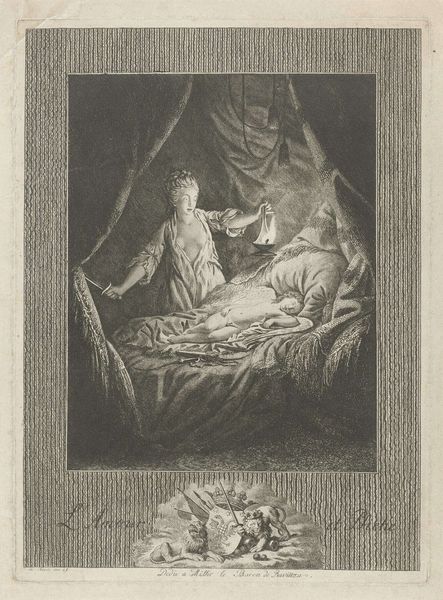
print, etching
#
portrait
#
narrative-art
# print
#
etching
#
portrait drawing
#
genre-painting
#
history-painting
Dimensions: 315 mm (height) x 450 mm (width) (bladmaal), 183 mm (height) x 225 mm (width) (plademaal)
Editor: Here we have Carl Bloch's etching, "The Daughter of Jairus," from 1881, housed at the SMK. It has a distinctly somber tone; the contrast between light and shadow really emphasizes the stillness. What is your interpretation of this work? Curator: The Daughter of Jairus places itself within the history-painting tradition, a field marked by academic power and cultural narratives, and encourages dialogue between art history and contemporary theory. Given Bloch's time, his focus on biblical narratives, can be read as him contributing to very specific power dynamics present in 19th-century European society. Who do you think had the authority to depict such stories, and, conversely, whose stories were often marginalized or left untold? Editor: So, you're saying that even in what appears to be a straightforward religious scene, there are underlying social and political implications about who gets to be seen and heard? Curator: Exactly. Think about it in terms of visibility. The very act of depicting this biblical narrative – a moment of supposed divine intervention concerning a young girl – reinforces the dominant religious and social structures of the time. What this means, essentially, is considering gender, race, and socio-economic factors involved in creating and interpreting art like this. This also can start a crucial dialogue with our time. Editor: That gives me a new way to see it – not just as a biblical scene, but also as a reflection of cultural power. Curator: Precisely. By understanding these contexts, we start seeing not just religious art, but tools that bolster existing cultural ideas and values, some of which marginalized many groups of people in our history. Editor: That adds such a deeper dimension to understanding the work. Thank you. Curator: My pleasure, it has been very thought-provoking for me as well.
Comments
No comments
Be the first to comment and join the conversation on the ultimate creative platform.

